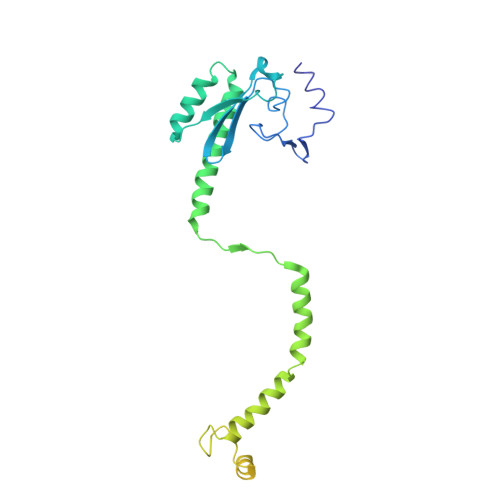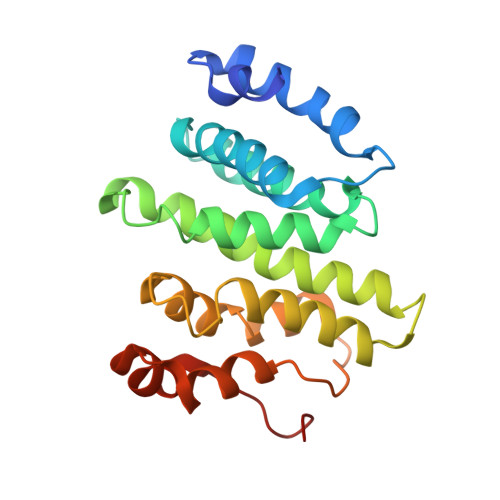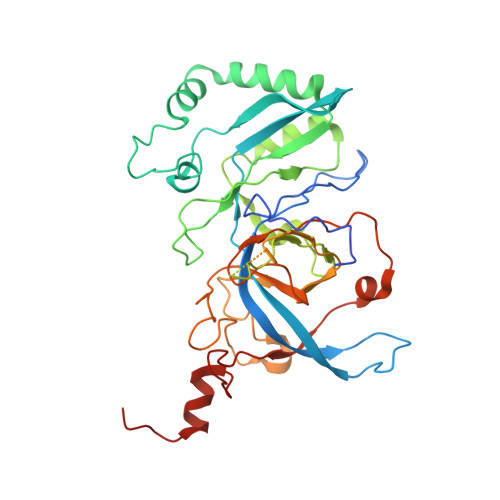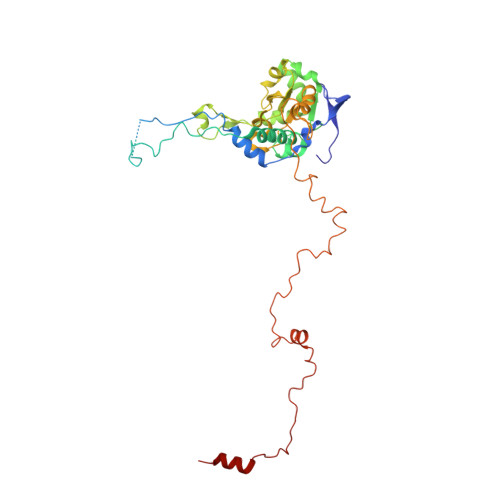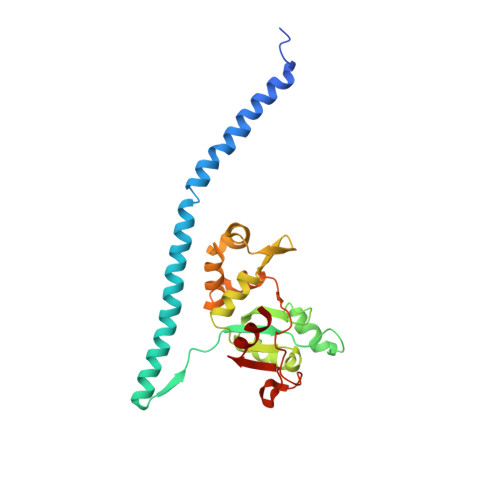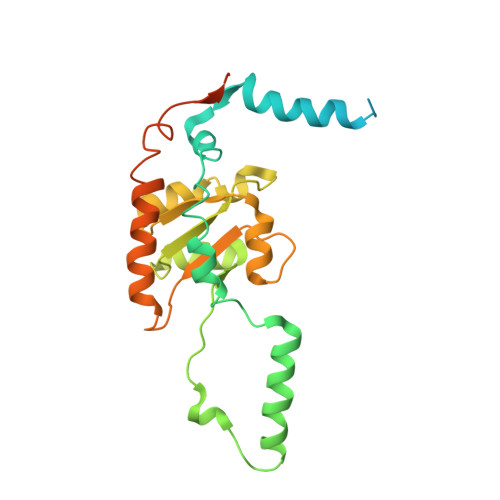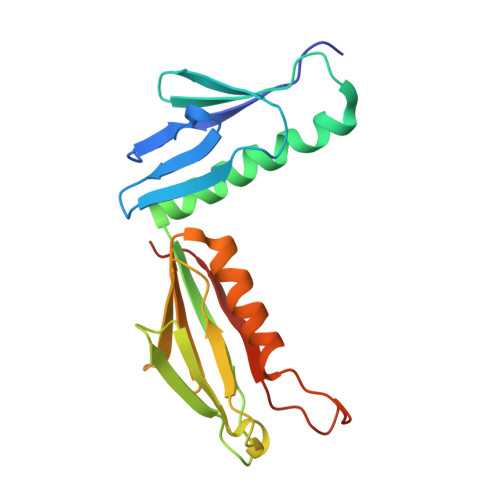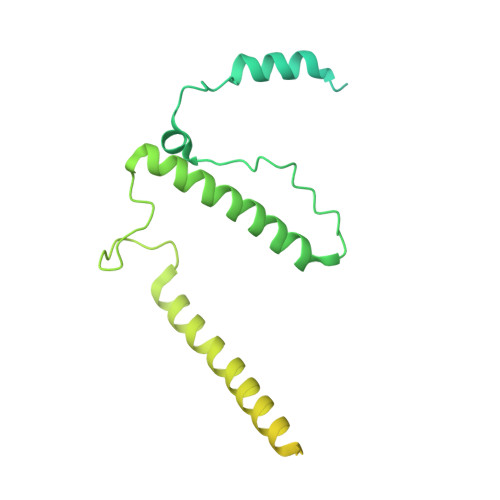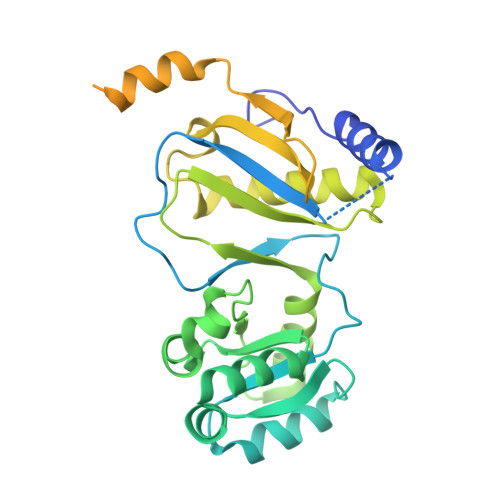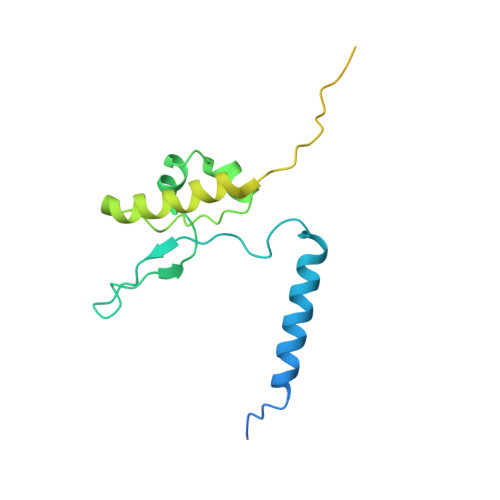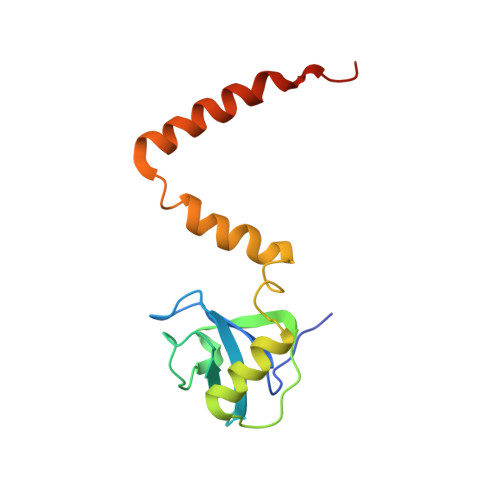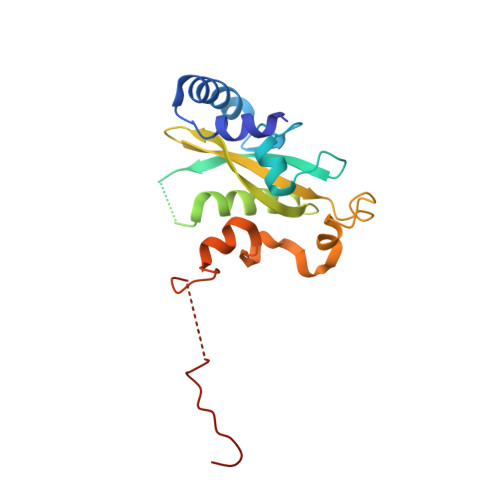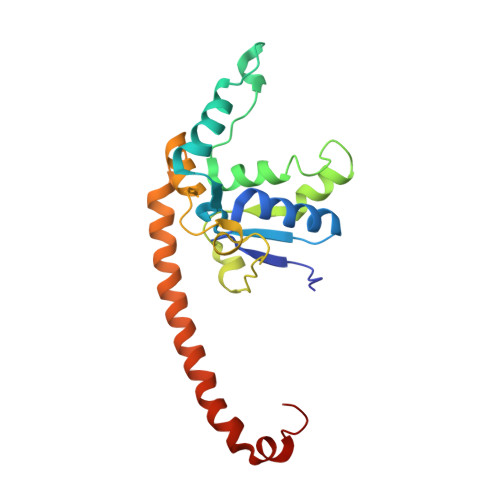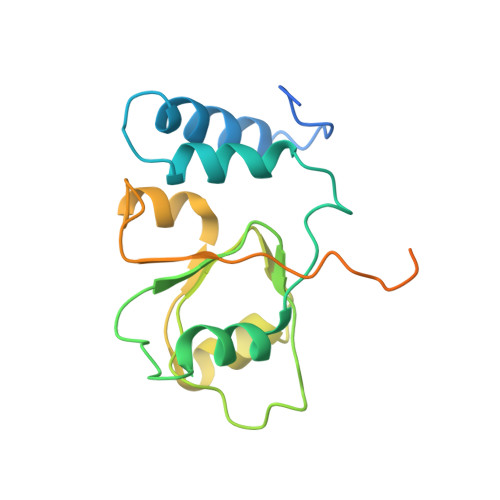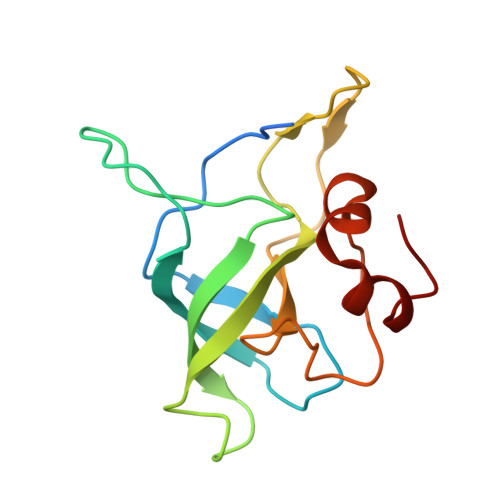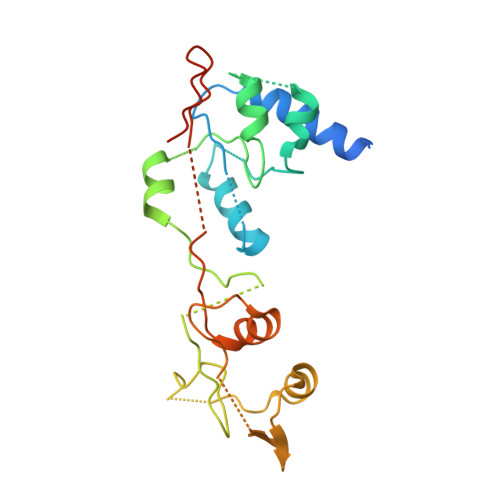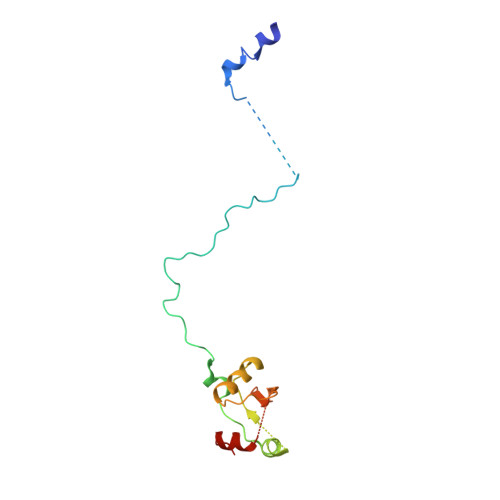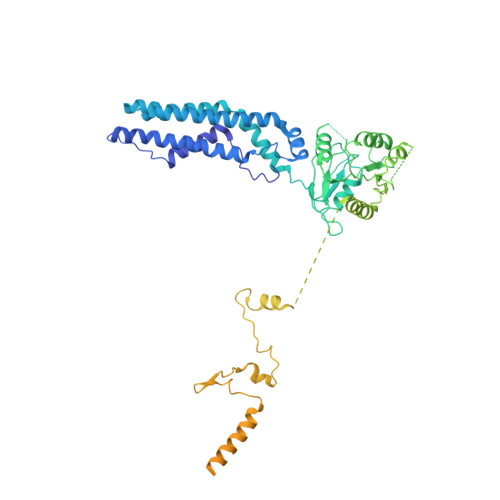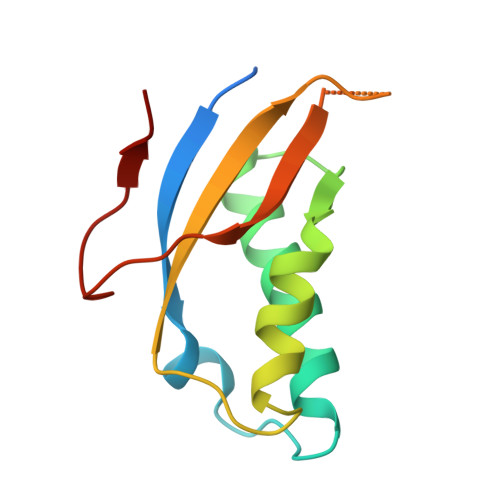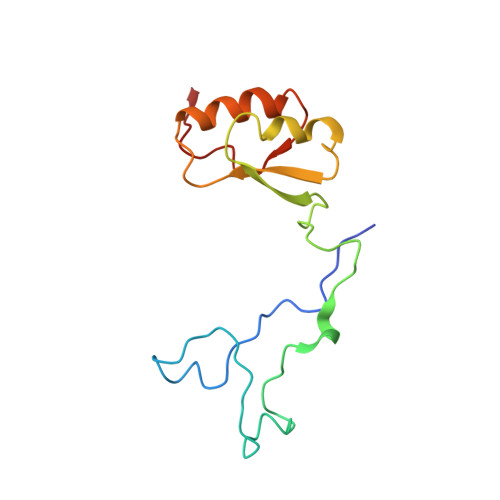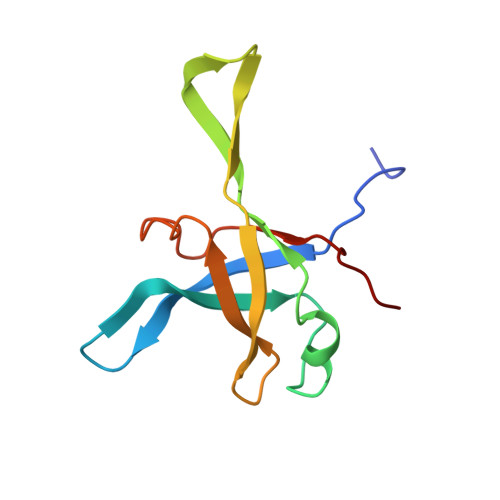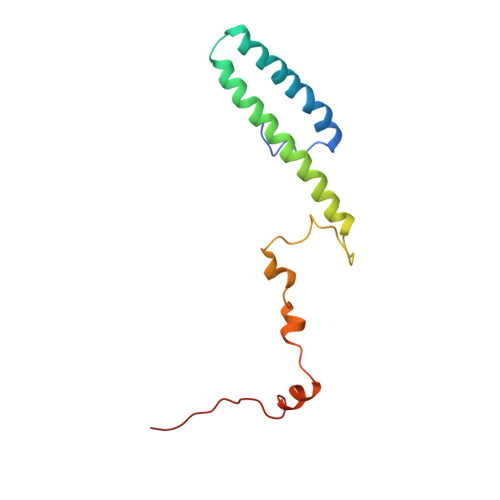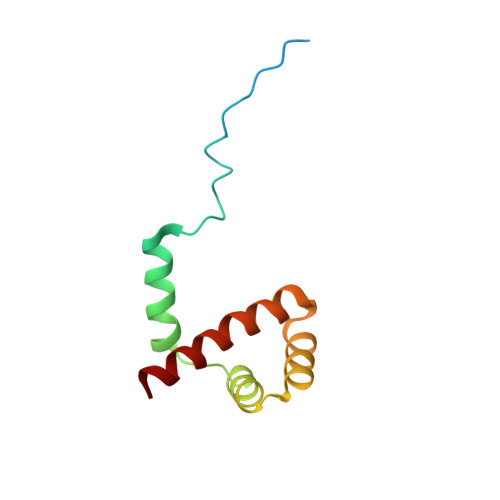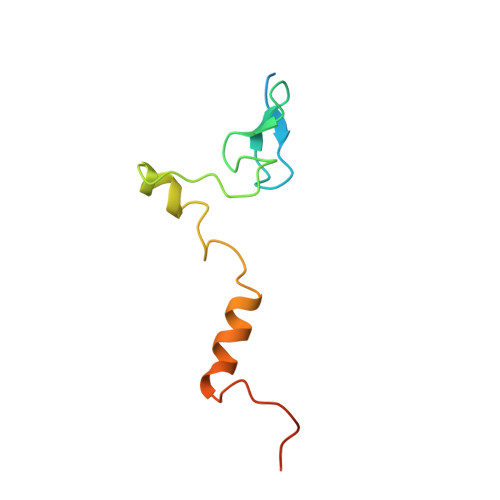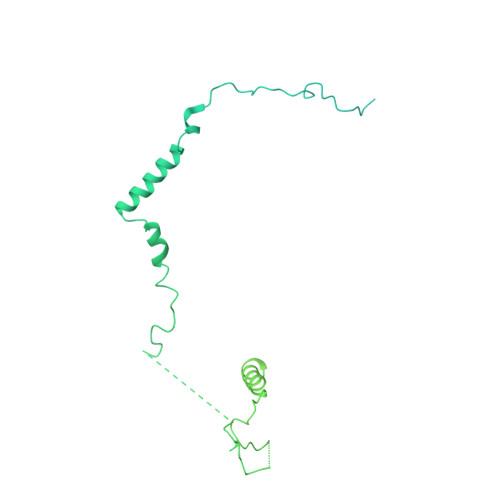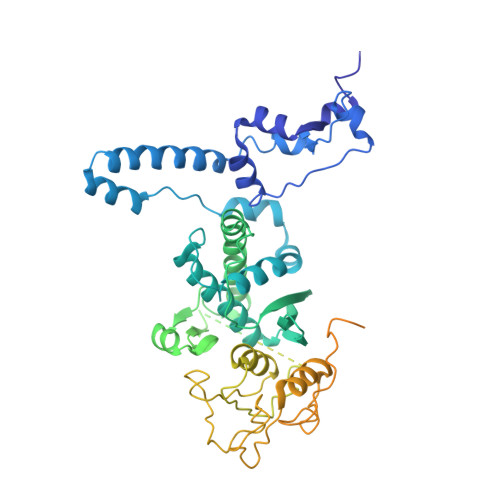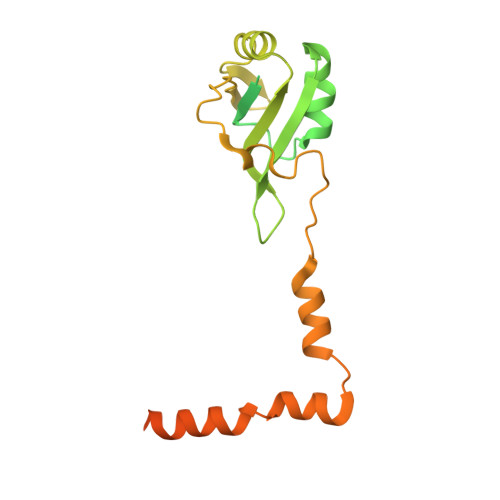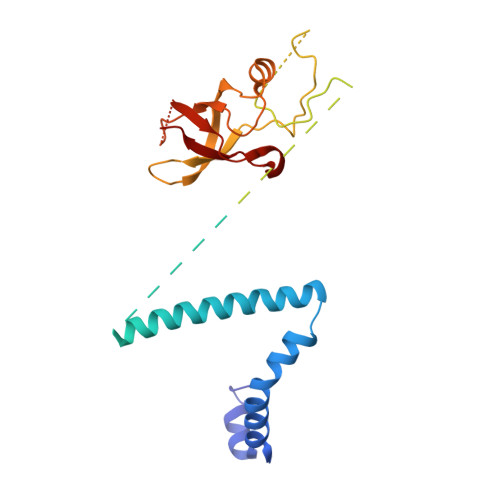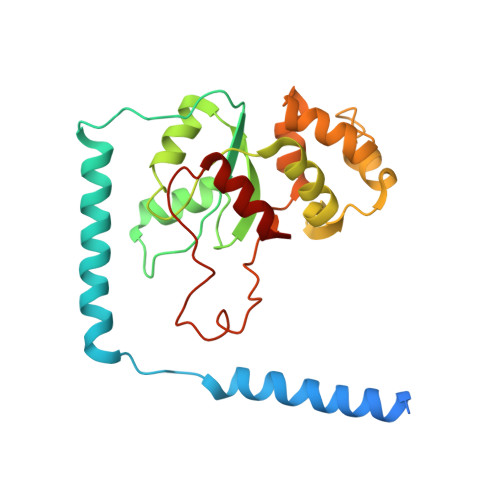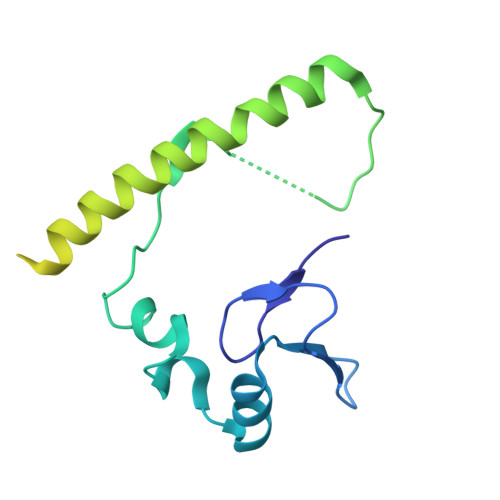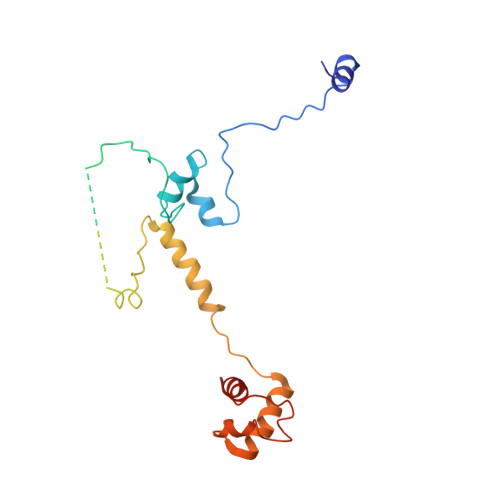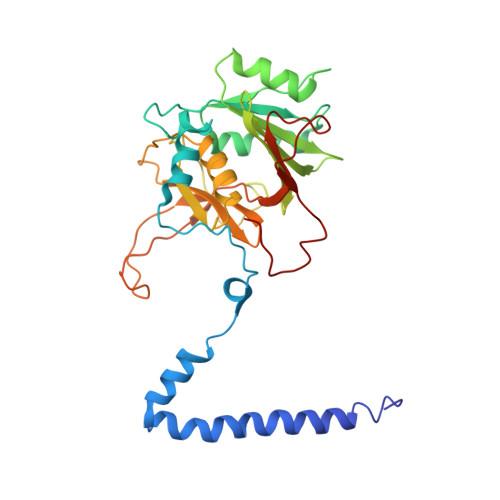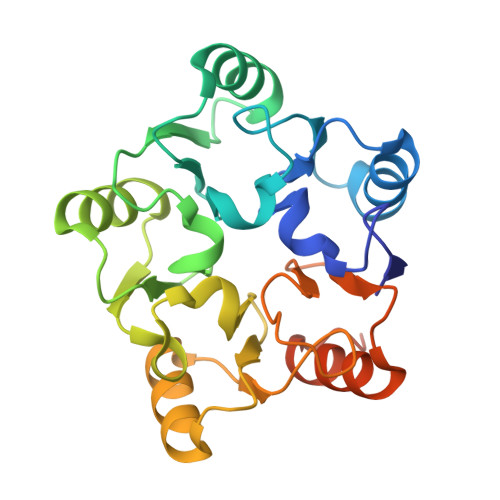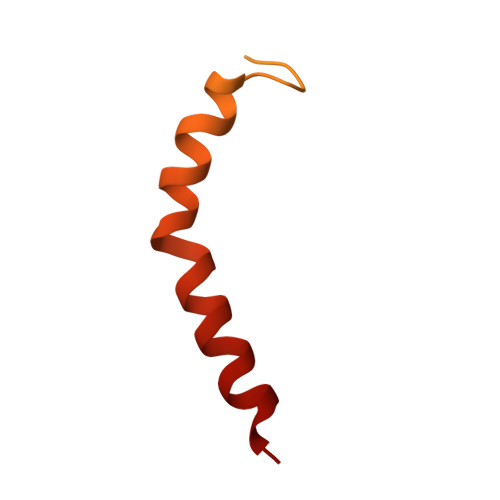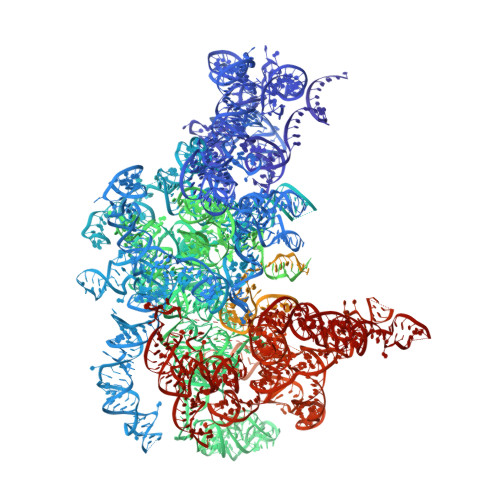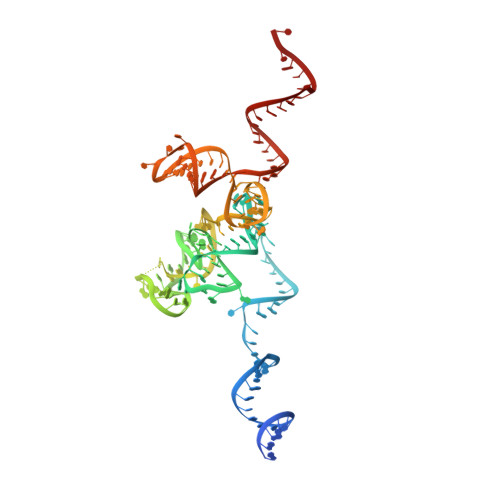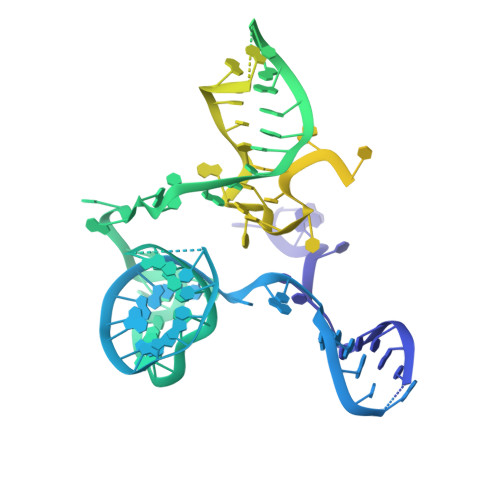Chromatin localization of nucleophosmin organizes ribosome biogenesis.
Ugolini, I., Bilokapic, S., Ferrolino, M., Teague, J., Yan, Y., Zhou, X., Deshmukh, A., White, M., Kriwacki, R.W., Halic, M.(2022) Mol Cell 82: 4443
- PubMed: 36423630
- DOI: https://doi.org/10.1016/j.molcel.2022.10.033
- Primary Citation of Related Structures:
8ESQ, 8ESR, 8ETC, 8ETG, 8ETH, 8ETI, 8ETJ, 8EUG, 8EUI, 8EUP, 8EUY, 8EV3 - PubMed Abstract:
Ribosome biogenesis takes place in the nucleolus, a nuclear membrane-less organelle. Although well studied, it remains unknown how nascent ribosomal subunits separate from the central chromatin compartment and move to the outer granular component, where maturation occurs. We find that the Schizosaccharomyces pombe nucleophosmin-like protein Fkbp39 localizes to rDNA sites encoding the 60S subunit rRNA, and this localization contributes to its specific association with nascent 60S subunits. Fkbp39 dissociates from chromatin to bind nascent 60S subunits, causing the latter to partition away from chromatin and from nascent 40S subunits through liquid-liquid phase separation. In vivo, Fkbp39 binding directs the translocation of nascent 60S subunits toward the nucleophosmin-rich granular component. This process increases the efficiency of 60S subunit assembly, facilitating the incorporation of 60S RNA domain III. Thus, chromatin localization determines the specificity of nucleophosmin in sorting nascent ribosomal subunits and coordinates their movement into specialized assembly compartments within the nucleolus.
Organizational Affiliation:
Department of Biochemistry, Gene Center, University of Munich (LMU), 81377 Munich, Germany.








